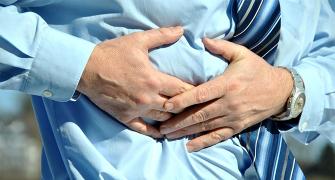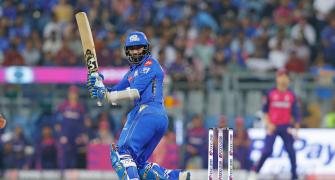The DASH diet is rich in fruits, vegetables, whole grains, and low-fat dairy foods, says Pavithra N Raj.

The heart is the most vital of all organs in the human body.
Blood is carried from the heart to all parts of the body in the vessels which enable smooth functioning of organs.
Each time the heart beats, it pumps blood into the vessels.
Blood pressure is created by the force of blood pushing against the walls of blood vessels (arteries) as it is pumped by the heart. The higher the pressure the harder the heart has to pump.
Hypertension, also known as high or raised blood pressure, is a condition in which the blood vessels have persistently raised pressure.
One of the primary causes of high blood pressure is stress. But it can also result from an underlying condition, such as kidney disease.
Unmanaged hypertension can lead to a cardiac arrest and other fatal problems.
What is DASH diet?
Some of the common risk factors for hypertension and rise in blood pressure include obesity, drinking too much alcohol, smoking, and family history.
Making small and healthy changes in your lifestyle may help prevent and fight the condition.
Beta-blockers are a common treatment for hypertension.
Eating a diet that is rich in whole grains, fruits, vegetables and low-fat dairy products and on saturated fat and cholesterol can lower your blood pressure by up to 11 mm Hg if you have high blood pressure.
This eating plan is known as the Dietary Approaches to Stop Hypertension (DASH) diet.
The DASH diet is rich in fruits, vegetables, whole grains, and low-fat dairy foods; includes meat, fish, poultry, nuts, and beans; and is limited in sugar-sweetened foods and beverages, red meat, and added fats.
Here's a list of food habits that will help lower and balance your blood pressure:
Drink enough water
Drinking adequate amounts of water is, quite simply, one of the healthiest, cheapest, and most effective ways that you can help lower your blood pressure.
Chronic dehydration causes blood vessels to constrict, which helps the body conserve water by reducing water loss through perspiration, urination, and respiration.
Avoid salt and processed food
Try and consume foods in their natural state, without the addition of salt or preservatives.
Limit your intake to 1 tsp (5 gm) iodised table salt per day.
Avoid sodium rich foods, salt, baking powder, canned foods, preserved foods, salted pickles, papads (all varieties), salted chips, nuts, popcorn and biscuits.
Avoid monosodium Glutamate (MSG)/ Ajinomoto, soup cubes, noodles and pasta.
Avoid cheese, salad dressing, sauces, aerated and soft drinks.
Avoid dried fish, dried fruits (cashew and pista) and fresh coconut.
Remember that consuming salt lesser than the normal requirement can also be problematic. It can cause hyponatremia and disorientation leading to cramps in the legs.
Do not cut off the sodium intake completely as it is an essential mineral that is involved in important functions of the body, including cellular function, fluid regulation, electrolyte balance and maintaining blood pressure.
If you are eating excess salt, you must also drink plenty of water for electrolyte balance to happen in which excess of salt is thrown out through urine.
Avoid hibiscus tea
Anthocyanin and other antioxidants in hibiscus tea may work together to keep blood vessels resistant to damage that causes them to narrow.
Switch to green tea
Green tea is so effective at combating high blood pressure is the polyphenols it contains.
The polyphenols are a group of powerful, plant-based nutrients. They can be sourced from a variety of foods but green tea is by far the richest source.
Bananas
Eating foods that are rich in potassium always help in bringing down your blood pressure, which makes bananas a great option.
Broccoli
Rich in magnesium, calcium and potassium, broccoli is a great source of regulating and controlling blood pressure. Broccoli sprouts are rich in compounds that help in reducing damage to the arteries.
Oatmeal
It is a high-fibre, low-fat, and low-sodium meal that helps in keeping your blood pressure on an optimum level.
Onion
Onions contain prostaglandin A.
This can dilate blood vessels, reduce blood vessel resistance, decrease blood viscosity and improve microcirculation, still does restrain the substance that increases blood pressure.
The skin of onions contain quercetin, a plant pigment which can help reduce blood pressure and prevent arteries from clogging.
Flaxseed
Several studies have pointed that flaxseed, which contains alpha-linolenic acid, lignans, peptides and fiber is very effective in reducing blood pressure.
You can include it in a variety of food.
Almonds
Almonds are a rich source of protein, fibre and magnesium.
It is their high magnesium content that makes them so effective in reducing blood pressure.
A lack of magnesium in the diet is often associated with high blood pressure.
Consuming a few almonds every day can help in maintaining blood pressure on an optimum level.
Include fruits and veggies as juices
You can also make the following juices a part of your daily diet:
Pomegranate juice
Pomegranate juice helps lower high blood pressure, improves cholesterol and even decreases plaques in your arteries.
Beetroot juice
These cause the arteries to relax and open resulting in a lowered blood pressure.
Drinking 250 ml beetroot juice a day can lower BP by 7.7/5.2mm hg.
You can make it tastier by blending one cup of beet juice with 2 carrots, 1 apple and a cucumber.
Celery juice
Celery juice contains the compound 3-n-butylphthalide or phthalide, which contributes to the vegetable’s taste and aroma.
As a chemical affecting the body, phthalide helps relax the smooth muscles in the walls of the blood vessels.
Blood pressure decreases as the blood vessels dilate and allow blood to flow easier and more freely.
You can combine celery with apple, carrot and beetroot to make a healthy concoction.
Pineapple juice
Pineapple contains potassium and a lesser amount of sodium, which helps lower blood pressure.
A cup of pineapple juice contains about 1 mg of sodium and 195 mg of potassium.

Pavithra N Raj is chief dietician, Columbia Asia Referral Hospital Yeshwanthpur, Karnataka.









